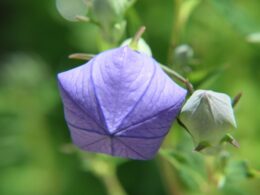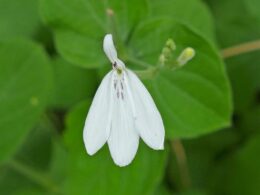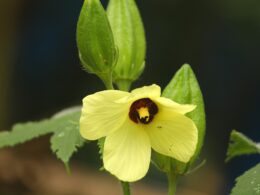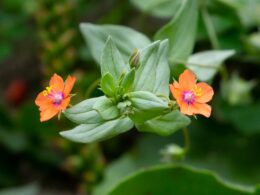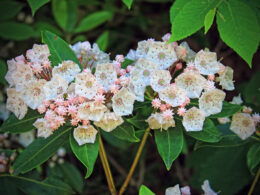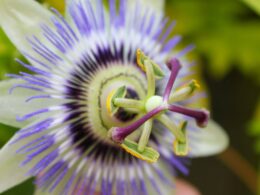What Is Passiflora? The Origin and Traits of Passionflower Vine
The passion vine (Passiflora) is a beautiful, fast-growing plant. Some species are shrubs or trees, while others are tendril-bearing vines that can reach 30 feet or longer. Red passion flowers are usually Passiflora coccinea or Passiflora vitifolia.
The leaves are usually simple and lobed, with a smooth or hairy surface. The plant’s striking flowers come in a variety of colors, including red, purple, blue, white, and yellow. They typically have five petals and five sepals, and they’re often quite fragrant. The fruit of the passionflower vine is edible and has a sweet, slightly tangy flavor.
Passionflower vines are easy to care for and require little upkeep. They’re drought-tolerant and can tolerate a wide range of soil types. Most passion flowers are native to tropical regions of South America, but they can be grown in most climates with some protection from frost.
Varieties of Passionflower With Red Blooms
Now, let’s take a look at some of the most popular red passion flowers. Knowing the differences between them, you can choose the right plant for your garden.
- Passiflora coccinea. Also known as scarlet passion flower or red passion flower, this is one of the most common red-blooming passion vines. It’s a fast-growing vine that can reach up to 12 feet in length. The blooms are typically red with purple, white and yellow accents, and they appear from summer to fall.
- Passiflora vitifolia. Known by the common name perfumed passionflower, this vine has large, fragrant blooms. The reddish orange flowers have a bright red corona, and they appear from early summer through fall. The cultivar ‘Scarlet Flame’ (also known as red granadilla) is especially popular.
- Passiflora racemosa. This species has gained the Royal Horticultural Society’s Award of Garden Merit. The blooms have a vivid red color (sometimes pinkish) and appear in racemes (clusters). They bloom throughout the summer and into fall.
- Passiflora manicata. This is another passion vine known as red passion flower, and it’s a less popular choice for gardens, but possible to come by.
There are also cultivars of other species with red in their petals or filaments, such as Passiflora alata ‘Ruby Glow.’ The most popular passion flower, Passiflora incarnata (maypop), has no such varieties. However, you can combine different colors to achieve a garden like no other!
How to Grow Red Passion Flowers
Red passion flowers are easy to grow and require little care. They’re fast-growing plants, so they can quickly cover a trellis or fence. Plant them in full sun to partial shade in well-drained soil. Water regularly during the growing season (once or twice per week), and fertilize monthly with a fertilizer that has an NPK ratio of 10-5-20.
Pruning isn’t necessary, but you can trim back the vines in late winter to control their size and encourage new growth. Passion flowers are generally quite hardy, but they may be damaged by frost. If you live in an area with cold winters, it’s best to grow them in containers that can be brought indoors. With proper care, your red passionflower will come back next year!
Can You Propagate Red Passionflower From Cuttings?
Yes, red passionflower vines can be propagated from cuttings taken in late spring or early summer. Here’s how to do it in three steps:
- Cut a piece of stem that includes several leaves, and remove the bottom leaves.
- Dip the cutting in rooting hormone, then plant it in moist potting mix.
- Place the pot in a warm, sunny spot, and keep the soil moist.
The cutting should root within a few weeks. Once it has, you can transplant it to the garden or keep it in a bigger pot.
Does Red Passion Flower Produce Fruit?
Passion flowers produce fruit, but the red-flowering varieties are not as reliable as other colors when it comes to fruiting. The most common red passion flower (Passiflora coccinea) is less likely to produce fruit than the blue or white varieties. However, if you’re growing passion flowers for their ornamental value, this shouldn’t be a concern. The blooms are just as beautiful, regardless of whether the plant produces fruit.
Are Red Passion Flowers Poisonous?
No, red passion flowers aren’t poisonous. In fact, all parts of the plant are edible. The fruits can be eaten raw or made into jams and jellies. The leaves can be used in salads, and the flowers can be added to desserts or used as a garnish.
Passionflower tea is also popular, and it’s made using the leaves and/or flowers. The tea has a calming effect and is often used as a natural remedy for anxiety or insomnia. However, this is mostly true of maypop, and hasn’t been tested on red passion flower.
Enjoy the Showy Blooms of Red Passion Vine!
Red passion flowers are a beautiful addition to any landscape. With their vibrant blooms and easy care requirements, they’re perfect for gardeners of all levels of experience. Choose the right variety for your garden, and enjoy the beauty of these red-flowering vines all season long.
Do you grow red passion flowers in your garden? Share your tips and tricks in the comments below!










